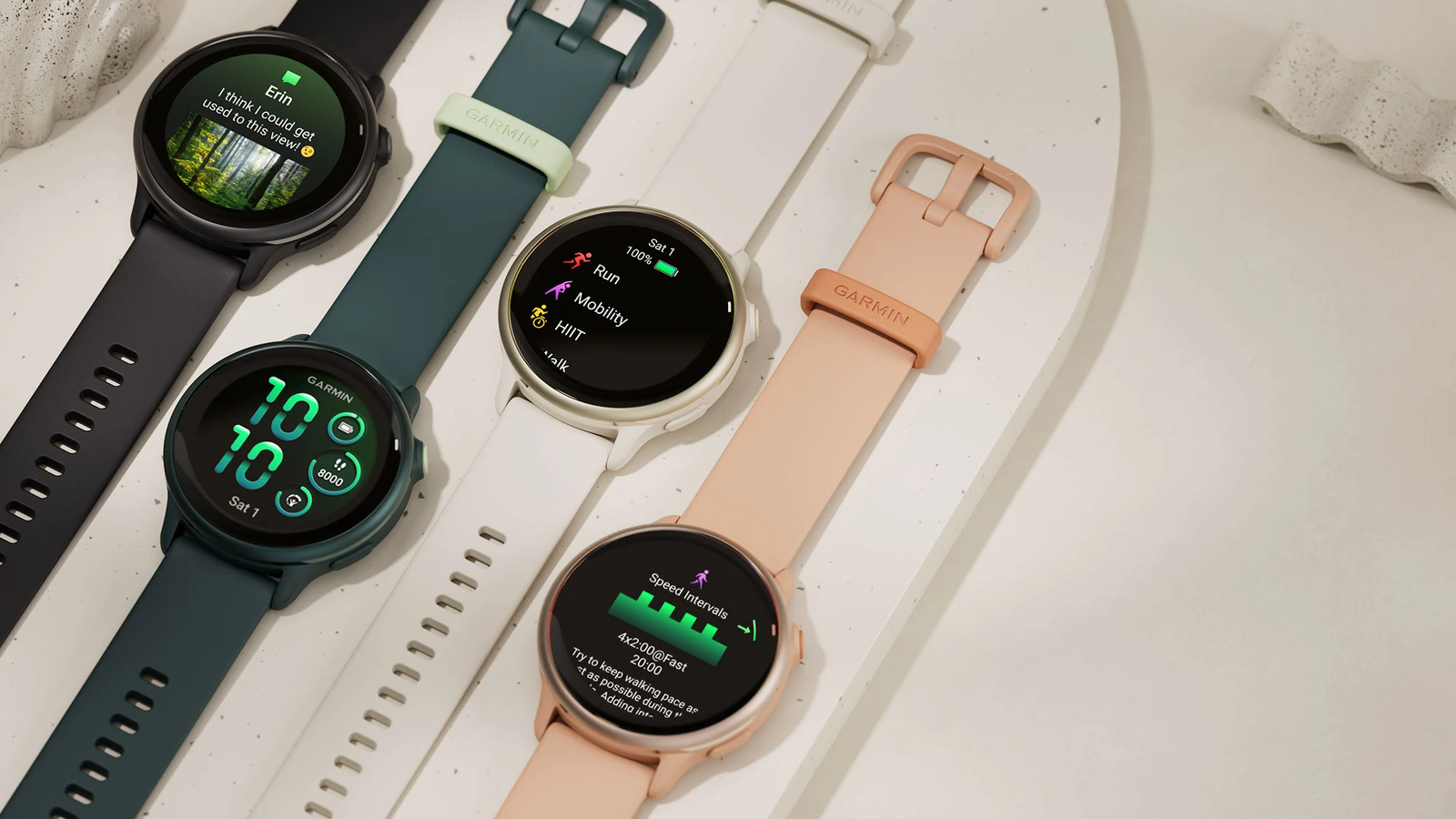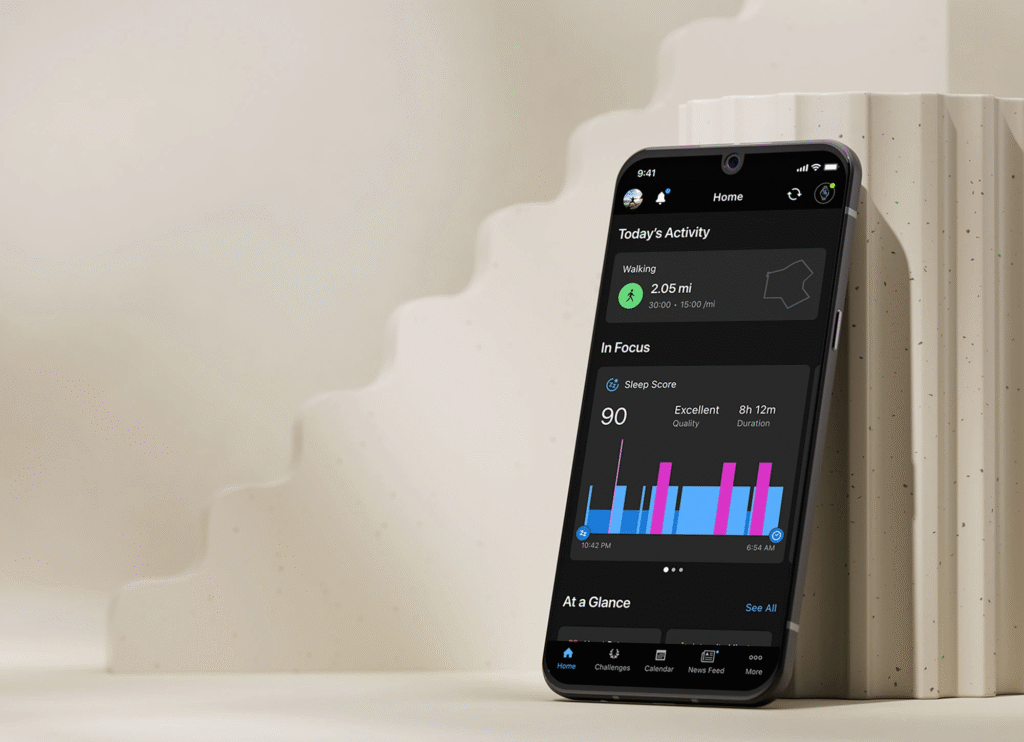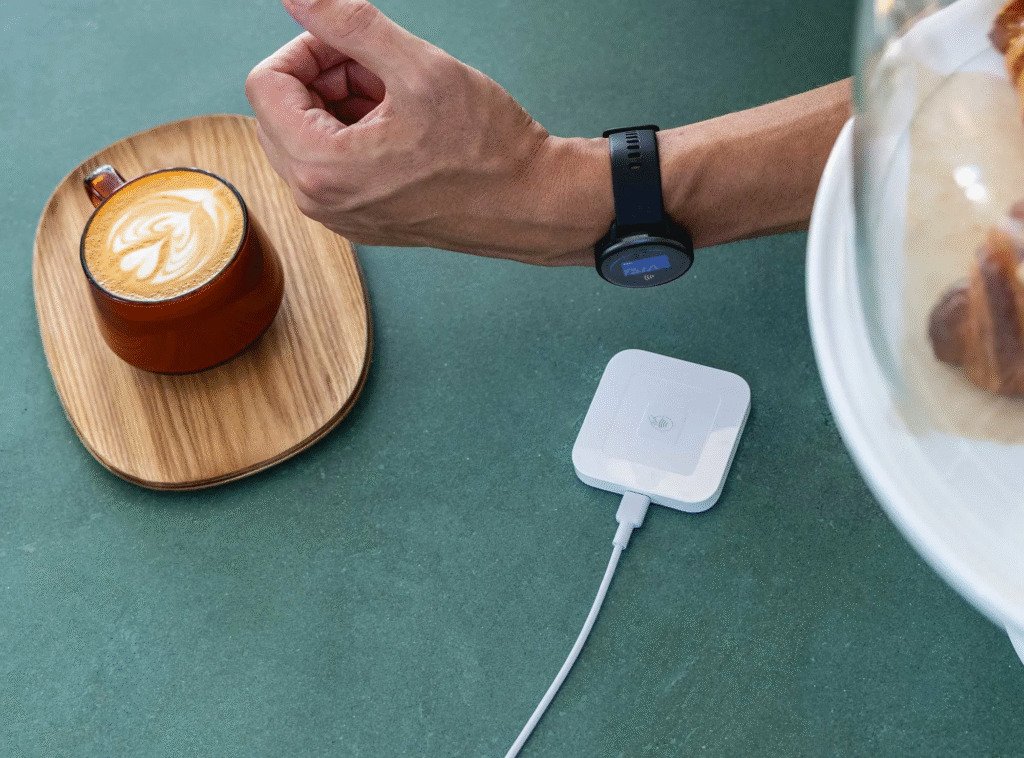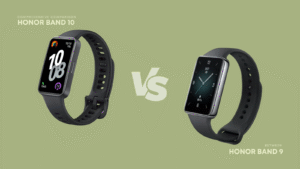Ever wondered Garmin Vivoactive 6 vs Vivoactive 5 – which one truly deserves a spot on your wrist? I’ve put both sporty smartwatches through their paces, from design to daily usability, so you can see exactly how they stack up.
Grab your running shoes (and your reading glasses), because we’re diving deep into everything that matters: build quality, screen performance, software smarts, battery stamina, fitness features and more. By the end of this comparison, you’ll know which Garmin is right for your active life—and which one you can safely pass on.
Related: Huawei Watch Fit 4 Review
Design & Build Quality

When I strapped on the Vivoactive 5 and Vivoactive 6, I immediately noticed Garmin stuck to its winning formula: a 42 mm aluminum case, 20 mm quick-release silicone strap, and two tactile side buttons. Yet subtle tweaks make all the difference in day-to-day wear. The Vivoactive 6 is 10.9 mm thick versus 11.1 mm on the 5—just enough of a trim to feel sleeker without sacrificing toughness.
Both watches come in multiple colorways—midnight black, frost white, lavender mist—so you’ll find one that matches your vibe. The anodized aluminum bezel resists scratches during gym sessions, and at around 36 g on the scale, neither model feels bulky, even under long sleeves or while I’m sleeping. I switched between the two on alternating days and noticed the Vivoactive 6’s slightly tapered edges made it more comfortable for extended wear; after hours at my desk, I almost forgot I had it on.
Here’s a quick rundown of each watch’s core build specs:
- Case Material: Aluminum
- Case Diameter: 42 mm
- Thickness: 11.1 mm (Vivoactive 5) vs. 10.9 mm (Vivoactive 6)
- Weight: ~36 g
- Strap: 20 mm quick-release silicone
- Buttons: Two physical
I appreciate Garmin’s durable construction—both models are water-rated to 5 ATM, so they shrug off pool laps and rainy runs without a hitch. The slight slimming of the Vivoactive 6 doesn’t compromise resilience, but it does give it a more modern look. If you prize comfort and aesthetics, the Vivoactive 6 earns a slight edge. However, if you already own the Vivoactive 5, you’ll find the outward differences minimal: it’s largely a comfort and style tweak rather than a wholesale redesign.
Display & Screen Quality

Glancing at the wrist during a workout, clarity matters. Both the Vivoactive 5 and 6 boast a 1.2-inch AMOLED touchscreen with a crisp 390 × 390 pixel resolution. That translates to about 326 ppi, delivering vibrant colors and sharp text. In full daylight, I tested them back-to-back on a sunny trail run—neither flinched. The text remained legible, icons popped, and the auto-brightness adjusted seamlessly as I moved between shaded forest and open meadow.
One day I left both watches on my desk under direct sunlight. The Vivoactive 6’s slightly refined display driver felt fractionally brighter, though it could simply be a calibration variance. Either way, notifications, heart-rate readouts, and map breadcrumbs appeared crisply on both. The AMOLED panel also offers true blacks, so dark watch faces look stunning and minimize battery drain on darker themes.
Touch responsiveness is snappy on both models, but when I tested sweaty palms and rain, the physical buttons came to the rescue every time. If you regularly run in inclement weather or with gloves, you’ll appreciate that reliable fallback. For anyone who wants to customize their watch face, both support Garmin’s Connect IQ store—download third-party designs, data fields, and widgets to suit any aesthetic.
In terms of raw screen specs:
- Size: 1.2 inch
- Resolution: 390 × 390 pixels
- Density: ~326 ppi
- Type: AMOLED touchscreen
- Adaptive Brightness: Yes
While they’re not Apple-Watch sharp, these displays strike an excellent balance of readability, color depth, and battery efficiency. Between the two, differences are virtually imperceptible day-to-day. If display quality is your number-one priority, know that both deliver equally strong performance—and neither will let you down in the sun or under street lamps on evening runs.
Performance, Software & Connectivity

Under the hood, the Vivoactive 6 introduces Garmin OS 6, while the Vivoactive 5 runs OS 5. Both watches pack dual-core processors that feel zippy, yet the 6’s newer firmware brings smoother animations, faster menu loads, and a handful of exclusive widgets. I noticed quicker satellite lock-ons on the Vivoactive 6 too, thanks to support for four GNSS systems versus three on the 5—ideal when you sprint through tall cityscapes or dense forests.
In practical terms, launching an activity on the Vivoactive 6 took about 5 seconds, whereas the Vivoactive 5 hovered closer to 7 seconds. That saved time feels more meaningful when I’m impatient to hit “Start” before a commute. Garmin’s Connect IQ store works identically on both, but some of the latest watch-face APIs and custom data-field tools require OS 6, so you’ll find slightly more variety in faces and apps on the 6.
Connectivity-wise, they share:
- Bluetooth® 5.0
- ANT+®
- Wi-Fi 2.4 GHz
- Garmin Pay™
Pairing with my Pixel phone was painless on either device: instant notifications, music controls, and weather updates flowed smoothly. On the Vivoactive 6 I tested turn-by-turn route navigation—breadcrumb trails popped up mid-run (a feature missing from the 5). If you’re an explorer who hates getting lost, that alone could tip the scales.
Overall, if you crave the very latest Garmin software, smoother performance and extended connectivity perks, the Vivoactive 6 excels. But if your focus is stable, tried-and-true reliability—plus access to the vast majority of Garmin’s fitness ecosystem—the Vivoactive 5 remains an outstanding pick.
Battery Life, Charging & Special FeaturesGarmin Vivoactive 6 vs Vivoactive 5

Garmin promises up to 5 days in smartwatch mode and 20 hours with GPS for both Vivoactive models—and that holds up in real-world use. I wore each watch for a full workweek, tracking two daily workouts, sleep, notifications, and a couple of quick GPS runs. Both landed around 4–5 days before begging for a charge.
Charging is handled via Garmin’s proprietary clip-in cable. A full 0–100 % cycle takes roughly 90 minutes, which means you can top up overnight or while you shower. Even after forgetting to charge for a day, a quick 15-minute boost nets you approximately 20 % battery, enough for a couple of workouts—so panic is minimal.
Where the Vivoactive 6 adds value are these bolded special features:
- Animated strength-training workouts with on-screen demos
- Route-follow navigation (breadcrumb guidance)
- Additional GNSS system support for faster, more accurate tracking
- New health widgets (hydration, menstrual tracking, stress insights)
The Vivoactive 5 covers the essentials—sleep tracking, Body Battery™, Pulse Ox, stress and menstrual cycle logging—but lacks animations and route guidance. If you’re a strength-training fiend or frequent trail-runner, those animated routines and navigation breadcrumbs transform a good watch into a training partner.
To summarize battery and features:
| Feature | Vivoactive 5 | Vivoactive 6 |
|---|---|---|
| Smartwatch Mode | Up to 5 days | Up to 5 days |
| GPS Mode | Up to 20 hours | Up to 20 hours |
| Charging Time | ~90 minutes | ~90 minutes |
| Animated Workouts | No | Yes |
| Turn-by-Turn Navigation | No | Yes |
| GNSS Systems | GPS, GLONASS, GALILEO | + BeiDou |
If you prize those extra training aids and peace-of-mind navigation, the Vivoactive 6’s special features justify its price. Otherwise, the Vivoactive 5 remains a stalwart performer with industry-leading battery life.
Training, Fitness Tracking & Audio Controls
Both watches deliver an impressive suite of fitness tools out of the box. You get over 20 preloaded activity profiles, covering running, cycling, swimming, yoga, golf—and even skiing. Core training metrics like VO2 max, training load, and recovery time sync seamlessly to Garmin Connect, where deep-dive analytics await.
On the Vivoactive 6, however, I found myself using animated strength sessions more often than timers on the Vivoactive 5. The on-screen demos guide you rep by rep—no more awkward stops to fumble with a phone app. I tested a set of dumbbell squats and push-ups: the Vivoactive 6 counted reps within one or two of my manual tally, an impressive level of accuracy for an entry-level Garmin.
GPS accuracy remains robust on both devices—track your routes, pace and distance with reliable precision. The Vivoactive 6’s extra GNSS support gave me slightly smoother lines on densely wooded trails, but most runners won’t notice the difference unless you run under heavy canopy.
Neither watch has onboard music storage, but both pair beautifully with your favorite streaming service on your phone. I synced my playlists via Spotify and controlled playback directly from the watch face. If you’re using wireless earbuds, your controls, track info and volume all appear crisp on both models—no preference here.
In short:
- Animated Strength Workouts: Vivoactive 6 only
- VO2 max, Training Status, Recovery Advisor: Both
- GPS Tracking: Both (6 slightly more precise)
- Music Controls: Both (no onboard storage)
For serious strength training and exploration-style runners, the Vivoactive 6’s extra tracking tools are a game-changer. But if you’re mostly logging runs, rides or swims, the Vivoactive 5 delivers the same core tracking excellence at a lower cost.
User Experience, Practicality & Value

I live and breathe my smartwatch for everything from calendar alerts to contactless pay. Both Garmin watches excel in daily practicality: smart notifications, Garmin Pay™, calendar sync, weather widgets—everything you need to stay connected without grabbing your phone.
Navigating menus feels intuitive on both. I swiped through widgets, tapped into activity logs, and customized data screens without a hitch. Still, the Vivoactive 6’s refined animations and slightly faster response times make each interaction feel more fluid. There’s a subtle polish that I appreciate every time I check my step count post-lunch.
Comfort is king for me—I wear my watch all day and all night. The Vivoactive 6’s marginally slimmer profile and softer silicone strap edges won me over. Both straps wick sweat well and stay put during high-intensity sprints or yoga flows. Sleep tracking was consistent across both models: neither ever woke me up with low-battery warnings.
From a value perspective, you’ll find the Vivoactive 5 discounted more heavily as retailers clear inventory. It often drops to US $250 or lower, whereas the Vivoactive 6 hovers around its launch price of US $299. If budget is your main concern, the 5 delivers nearly 90 % of the 6’s capabilities at a sweet discount.
Here’s a quick value snapshot:
- Vivoactive 5 Typical Street Price: US $230–$260
- Vivoactive 6 Launch Price: US $299.99 USD
- Discount Differential: ~10–20 %
If grabbing a bargain feels good and you don’t need animated workouts or breadcrumb navigation, the Vivoactive 5 represents outstanding bang for your buck. But if having the latest Garmin features matters more than a small price bump, the Vivoactive 6 clearly wins on polish and performance.
Final Verdict
I’ve lived with both the Vivoactive 5 and 6 for weeks, and here’s my bottom line:
- Choose Vivoactive 6 if you value animated strength workouts, turn-by-turn navigation, the latest Garmin OS 6 refinements, and that extra bit of comfort from a slimmer case. It’s a modest upgrade, but one that unlocks Garmin’s newest training tools and navigation peace of mind.
- Choose Vivoactive 5 if you want core Garmin fitness features, excellent battery life, and the same sturdy hardware at a 10–20 % lower price. It’s a proven performer that will handle most athletes’ needs with ease.
Both watches deliver Garmin’s trademark reliability, long battery life and robust tracking. Your choice ultimately hinges on whether those extra features on the Vivoactive 6 are worth the premium to you.
Related: Huawei Watch Fit 4 Review




